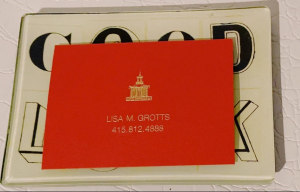It might seem like an insignificant piece of card stock, but in the 19th and early 20th century, social interaction was a well-mannered affair. The tool that facilitated these interactions was the calling card; they streamlined introductions and helped remind people of new acquaintances and needed visits. The calling card also served as a way to brand your social identity. The practice of “calling” upon or visiting one’s relatives, friends, and acquaintances was a middle and upper class social tradition.
The giving and receiving of calling cards developed a very elaborate set of rituals and rules that every gentleman tried to master.
Here is the history of calling card etiquette according to artofmanliness.com:
A man’s calling card was simple and plain in design. About the size of a playing card (they were toted about in a carrying case tucked in one’s breast pocket), they bore a man’s name, and later on, his address as well.
Generally upon a gentleman’s initial visit to a home, he would simply leave a card and then depart.
On a first visit to a household, a gentleman gave one card to each lady of the house.
A married man had a medium sized card, while an unmarried man had a smaller card. Men’s cards were always smaller than women’s.
When calling upon the lady of the house, if she was not home, but her daughter was, the gentleman sent in his card and departed, as it was not usual for a young lady to receive calls from a gentleman unless they were very intimate friends.
If no card was sent, or the return card was sent in an envelope, this signaled that the acquaintance did not wish for a personal visit to occur.

My “lucky” red pagoda calling card.
